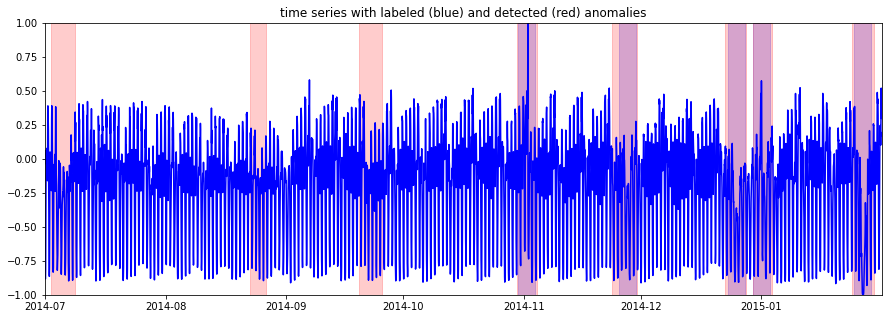This is a personal project to implement examples of two approaches to time series anomaly detection, one using prediction methods and one using reconstruction methods.
For each approach, we have selected a particular deep neural network model, and demonstrated the end-to-end procedure of anomaly detection using the NYC taxi data from the Numenta Anomaly Benchmark repository.
In both cases, with only a small effort of hyperparameter search, we obtain results with the desired properties of recovering most of the known anomalies (high recall) without raising too many false alarms (acceptable precision). [A sample result is illustrated at the top of the page.]
This approach relies on a method of predicting (or forecasting) a segment of a time series based on its history. Ideally, if the predictions characterize expected behaviours, any significant divergence in the actual values would indicate an anomaly.
The prediction model we consider is DeepAR, developed by Amazon and available in AWS SageMaker. DeepAR has the benefit of producing probabilistic predictions, offering a natural way to quantify the normality of each actual value.
For the demonstration, we use SageMaker SDK for DeepAR training and inference.
This approach relies on a method of reconstructing a time series segment from a low-dimensional latent space representation. Ideally, if only the non-anomalous parts are closely reconstructed, any significant divergence from the original values would indicate an anomaly.
The reconstruction model we consider is TadGAN, developed by researchers at MIT. This GAN-based model strives for the reconstruction goal through an adversarial relation between its components -- generators learning to synthesize realistic data, and critics learning to differentiate real and synthetic data.
For the demonstration, we have re-implemented TadGAN in TensorFlow 2, in order to better utilize GPU acceleration and introduce modifications. Our implementation is included in this repository.
